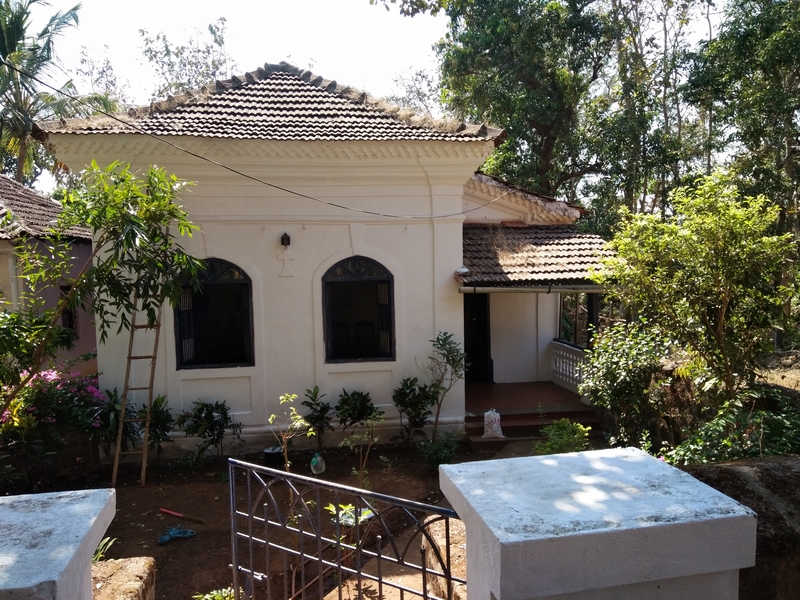Great Wall of China, in China

On a visit to the Great Wall of China, one can only stand in awe at the massive construction and wonder if it was man or superman who built it in days past. Cameras flash, people smile, but we wanted to know more about the wall and its construction.
According to statistics, the Great Wall of China is the largest monument that was ever built by human hands. The wall is thousands of miles long, passes through 156 counties, and has about 7,000 lookout towers. The spectacular wall was built 2,000 years ago, and it was constructed to keep away enemy tribes. Today it is a very popular tourist destination and millions of tourists from all over the world come to gawk at it and have their pictures taken on it.
The Great Wall, one of the greatest wonders of the world, was listed as a World Heritage by UNESCO in 1987. Comparable to a gigantic dragon, the Great Wall winds up and down across deserts, grasslands, mountains and plateaus, stretching approximately 8,851.8 kilometers, from east to west of China.
The history of the wall dates back to more than 2000 years, and unfortunately, some of the sections are now in ruins or have disappeared completely. However, happily it is still one of the most appealing attractions all around the world owing to its architectural grandeur and historical significance.
The main sections of the Wall that we see today, were mostly built during the Ming Dynasty (1368 - 1644). Starting from Hushan in the east to Jiayuguan Pass in the west, the wall runs along Liaoning, Hebei, Beijing, Tianjin, Shanxi, Inner Mongolia, Ningxia, Shaanxi, Gansu and Qinghai. Interest from researchers is focussed on the vicissitude of the Wall of the Qin, Han, and Ming Dynasties.
History tells us that the Great Wall was originally built in the spring and autumn, and was necessary as a defensive fortification by the three states: Yan, Zhao and Qin.
It has been through constant extensions and repairs in later dynasties. History tells us that it began as independent walls for different states when it was first built, and did not become the "Great" wall until the Qin Dynasty. Emperor Qin Shihuang succeeded in his effort to have the walls joined together to fend off the invasions from the Huns in the north. Since then, the Wall has been an icon of China, of the fortitude and perseverance of the Chinese spirit.
Mystery surrounds the construction of the wall as it drew heavily on the local resources for construction materials. Obviously a great army of manpower, which composed of soldiers, prisoners and local people, built the wall. No one really knows the conditions in which this imposing structure was built, but it surely demonstrates the wisdom and tenacity of the Chinese people.
Stories abound which have now turned into legends about the building of the Great Wall. Our guide told us a sad yet romantic story about the collapse of a section of the Wall, caused by Meng Jiangnu. She was a woman devastated by the death of her husband, while building the wall. The story has it that a section of the wall collapsed as she cried bitterly on losing her husband. This legend has been spread widely through textbooks, folk songs and traditional operas.
The government conducted a 45-day long survey of 101 sections of the Wall in different provinces. Then the China Great Wall Academy reported on December 12, 2002 that the forces of nature and destruction by surrounding human habitation was reducing the length of the Wall rather rapidly, with the result that less than 30% remains in good condition. The Academy then had called for greater protection of this important icon which the government immediately took steps to remedy.
According to statistics, the Great Wall of China is the largest monument that was ever built by human hands. The wall is thousands of miles long, passes through 156 counties, and has about 7,000 lookout towers. The spectacular wall was built 2,000 years ago, and it was constructed to keep away enemy tribes. Today it is a very popular tourist destination and millions of tourists from all over the world come to gawk at it and have their pictures taken on it.
The Great Wall, one of the greatest wonders of the world, was listed as a World Heritage by UNESCO in 1987. Comparable to a gigantic dragon, the Great Wall winds up and down across deserts, grasslands, mountains and plateaus, stretching approximately 8,851.8 kilometers, from east to west of China.
The history of the wall dates back to more than 2000 years, and unfortunately, some of the sections are now in ruins or have disappeared completely. However, happily it is still one of the most appealing attractions all around the world owing to its architectural grandeur and historical significance.
The main sections of the Wall that we see today, were mostly built during the Ming Dynasty (1368 - 1644). Starting from Hushan in the east to Jiayuguan Pass in the west, the wall runs along Liaoning, Hebei, Beijing, Tianjin, Shanxi, Inner Mongolia, Ningxia, Shaanxi, Gansu and Qinghai. Interest from researchers is focussed on the vicissitude of the Wall of the Qin, Han, and Ming Dynasties.
History tells us that the Great Wall was originally built in the spring and autumn, and was necessary as a defensive fortification by the three states: Yan, Zhao and Qin.
It has been through constant extensions and repairs in later dynasties. History tells us that it began as independent walls for different states when it was first built, and did not become the "Great" wall until the Qin Dynasty. Emperor Qin Shihuang succeeded in his effort to have the walls joined together to fend off the invasions from the Huns in the north. Since then, the Wall has been an icon of China, of the fortitude and perseverance of the Chinese spirit.
Mystery surrounds the construction of the wall as it drew heavily on the local resources for construction materials. Obviously a great army of manpower, which composed of soldiers, prisoners and local people, built the wall. No one really knows the conditions in which this imposing structure was built, but it surely demonstrates the wisdom and tenacity of the Chinese people.
Stories abound which have now turned into legends about the building of the Great Wall. Our guide told us a sad yet romantic story about the collapse of a section of the Wall, caused by Meng Jiangnu. She was a woman devastated by the death of her husband, while building the wall. The story has it that a section of the wall collapsed as she cried bitterly on losing her husband. This legend has been spread widely through textbooks, folk songs and traditional operas.
The government conducted a 45-day long survey of 101 sections of the Wall in different provinces. Then the China Great Wall Academy reported on December 12, 2002 that the forces of nature and destruction by surrounding human habitation was reducing the length of the Wall rather rapidly, with the result that less than 30% remains in good condition. The Academy then had called for greater protection of this important icon which the government immediately took steps to remedy.

Related Articles
Editor's Picks Articles
Top Ten Articles
Previous Features
Site Map
Content copyright © 2023 by Marianne de Nazareth. All rights reserved.
This content was written by Marianne de Nazareth. If you wish to use this content in any manner, you need written permission. Contact Marianne de Nazareth for details.





 -resizeimage.jpg.jpg)

